Bark River’s EXT series of knives are incredible. The latest offering, the EXT-1 improved may be the best one yet.
by Leon Pantenburg
Disclaimer: Bark River supplied the product for this review. Nobody had any input in this post, and all I ever promise is a fair shake.
I reviewed the Bark River EXT-2 when it came out several years ago and loved the knife. I used it on a successful deer hunt, then used it to carve the Thanksgiving turkey. The knife worked really well. The EXT-2 combined the BR Fox River with the proven Bravo handle and many would consider it the ultimate deer hunting knife. (Read the EXT-2 review.)
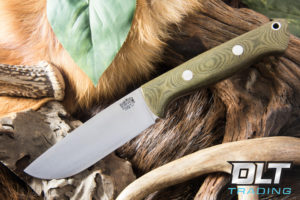
The EXT-2 bears a close resemblance to the Ext-1.
(To avoid confusion with the earlier versions, I have dubbed the most recent EXT-1 “improved”.) The improved EXT-1, while different from the EXT-2, may prove to be an even better knife. Jason Thoune, owner of DTL Trading, said the idea behind the original EXT-1 was based on BR’s most popular hunting knife, the Fox River. The original EXT-1 mated the Bravo handle with the Fox River blade.
The Fox River was my first BR knife, and I planned on a long working relationship with it but the handle just didn’t work for me. Apparently, I wasn’t the only one.
Users designed this latest EXT.
“We listened to customer feedback. When you hear the same things from several people, that tells you something,” Thoune said. “We heard the original EXT-1 handle was too short and thin and a lot of people wanted a contoured handle.”
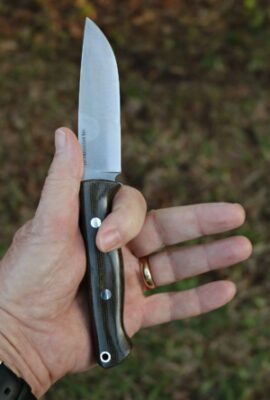
A thicker, longer, contoured handle are part of the improvements.
The improved EXT-1 includes these subtle changes. The handle is thicker and longer, and the blades are thinner.
“People are finally going for the thinner blades,” Thoune said. “They just work better. With today’s steels there is not much danger of breaking a blade.”
I test knives by using them for what they were designed for. Unfortunately, the improved EXT-1 arrived just as deer season ended in Mississippi this year, so we’ll wait to see how the knife performs on big game. But it has already been used in wilderness survival classes, and I’ll soon be on the Mississippi River with Quapaw Canoe Company to further wring it out. And some of my hunting buddies may draw alligator tags.
So what’s the difference between the improved EXT-1 and EXT-2?
Improved EXT-1 SPECS: (Courtesy of DLT Trading)
- Overall Length: 8.625″
- Blade Length: 4.125″
- Blade Thickness: .125″
- Handle Thickness: .9″
- Tang: Full
- Blade Style: Drop Point
- Blade Steel: MagnaCut
- Weight: 5 oz
- Country of Origin: USA
Here are the EXT-2 specs (DLT Trading)
- Overall Length: 9.41″
- Blade Length: 4.53″
- Cutting Edge Length: 4.81″
- Blade Thickness: 0.156″
- Blade Steel: CPM-3V @ 60 HRC
- Blade Style: Drop Point
- Edge Style: Plain
- Handle Material: A variety of natural and micarta choices
- Handle Thickness: 0.85″
- Weight: 7.16 oz
- Tang: Full
- Country of Origin: USA.
The difference between the EXT-1 and the EXT-2 is all about size and different steels. The EXT-1 is smaller and lighter overall, and there are different steels being used. (More on that later.)
“It’s all about subtleties,” Thoune said. “They work together to make a better user knife.”
The good stuff:
I haven’t had this improved EXT-1 long enough to properly wring it out, and now it’s several months until deer season. But the knife has been doing well in the kitchen, and it was used to help my neighbor clean several crappie. If one of my hunting buddies harvests an alligator in August, the knife will get wrung out sooner.
Here is what I notice so far:
Steel: Probably the biggest difference in the two is the steel. The EXT-2 comes in CPM 3V, which is one of my favorites. I’ve used that steel in various hunting and bushcraft knives for about ten years, and I have no complaints. CPM 3V, A2 and other super steels have taken blade composition and performance to new heights.
But if you spend time outdoors in a wet, hot, humid environment, like I do in the Deep South, rust resistance is a definite consideration. Magnacut is known for extreme rust resistance.
“A lot of people want stainless,” Thoune said. “MagnaCut was designed as a knife steel for the knife market. If you live on the coast or in the tropics, MagnaCut is a really good choice.”
Blade thickness: At .125 inches, the EXT-1 blade is stout enough for heavy use. I prefer thinner blades in working knives, as did the Vikings, the Longhunters and the Mountain Men. With today’s super steels, you’d have to be a real klutz, and work at it, to break one of these blades. The EXT-1 will serve really well as a survival knife.
Handle: To use a knife effectively, Thoune said, the knife has to fit the user’s hand well. The EXT-1 handle fits my hand very well. (Here is how to measure your hand for handle fit.)
At 0.9 inches, the EXT-1 handle is thicker than the EXT-2’s handle at 0.85. But the difference is noticeable to the user. I would be able to use the thicker handle longer and more comfortably – and more safely – over long periods of time.
Blade length: I prefer a four-to-five inch blade in a hunting knife. IMO, that is the best length for a hunting knife blade. For me, the EXT-1 hits the sweet spot of blade length.
Full tang blade: A full tang is the best choice for a survival or hunting knife that might end up being used in a survival situation. And a backcountry hunting trip is probably your best chance ever to end up in a survival situation.
Point: A drop point may be the best choice for a hunting knife. I tend to go with a clip point with a long swedge when there is a choice, but that is personal preference.
Made in the USA: All Bark River knives are made in Escanoba, Michigan, by American craftspeople. The company and employees pay local, state and federal taxes and contribute to their community. Buy American!
Then there’s this:
This is not advertising copy, but I can’t find anything about this knife to dislike. I’ll have to fall back on my standard complaint: I wish the handle was just a trifle thicker. For me a 1.0 inch thickness would be great.
Please click here to check out and subscribe to the SurvivalCommonSense.com YouTube channel – thanks!

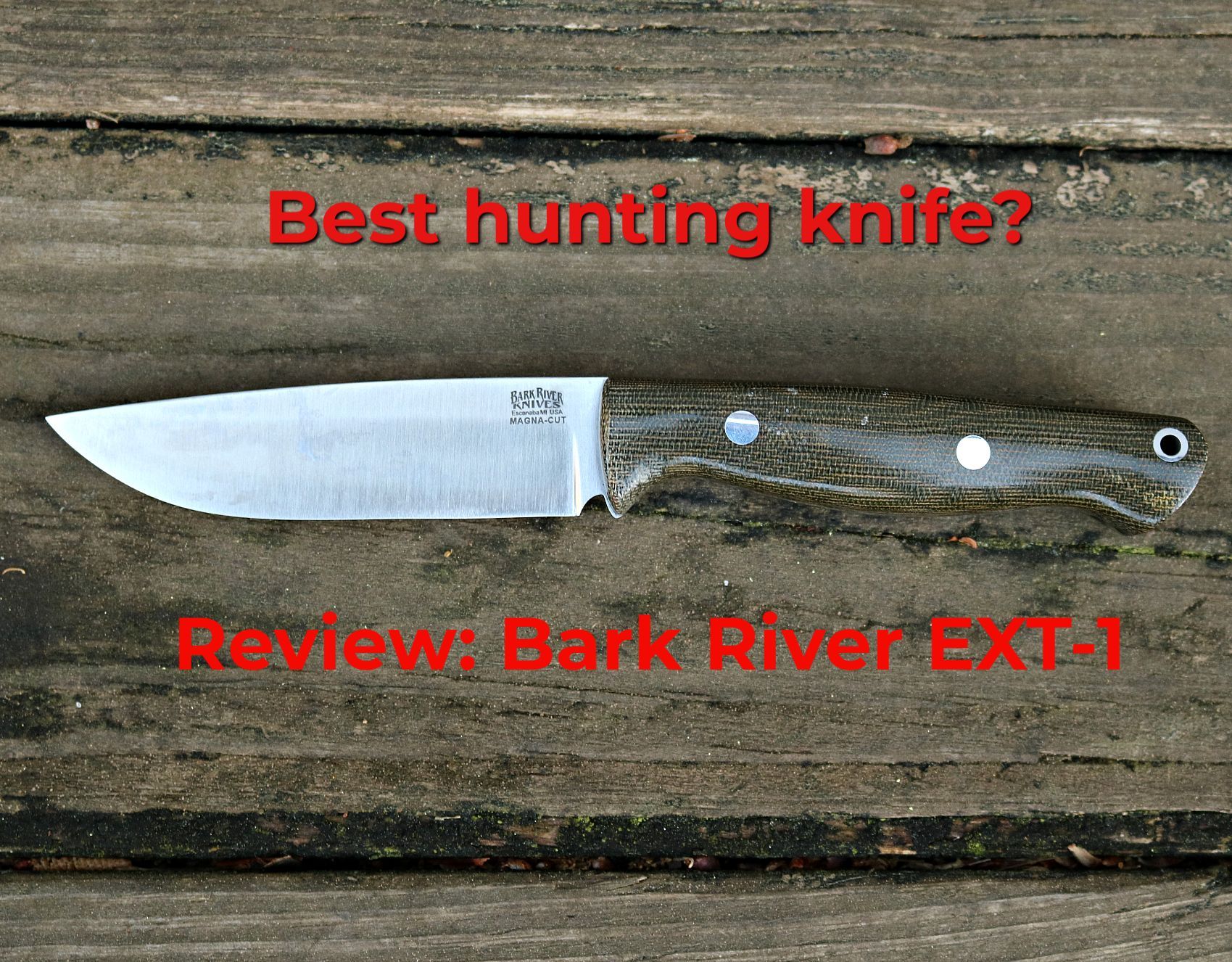
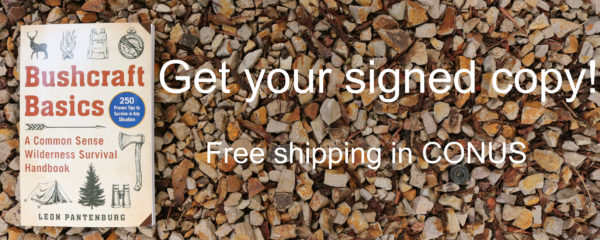
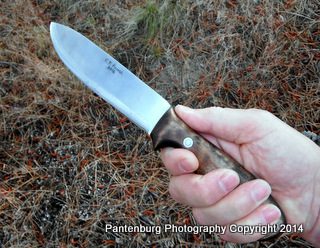
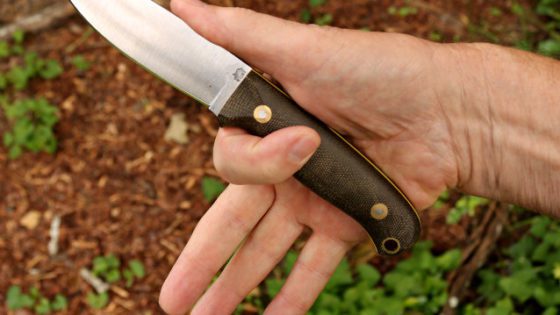
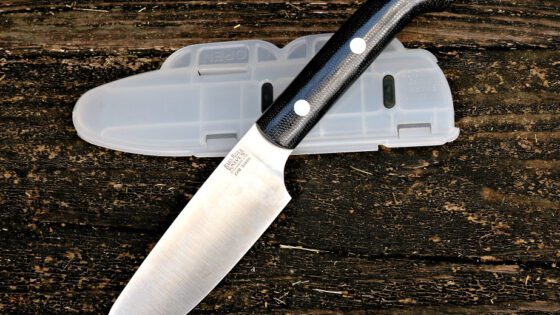
Leave a Reply